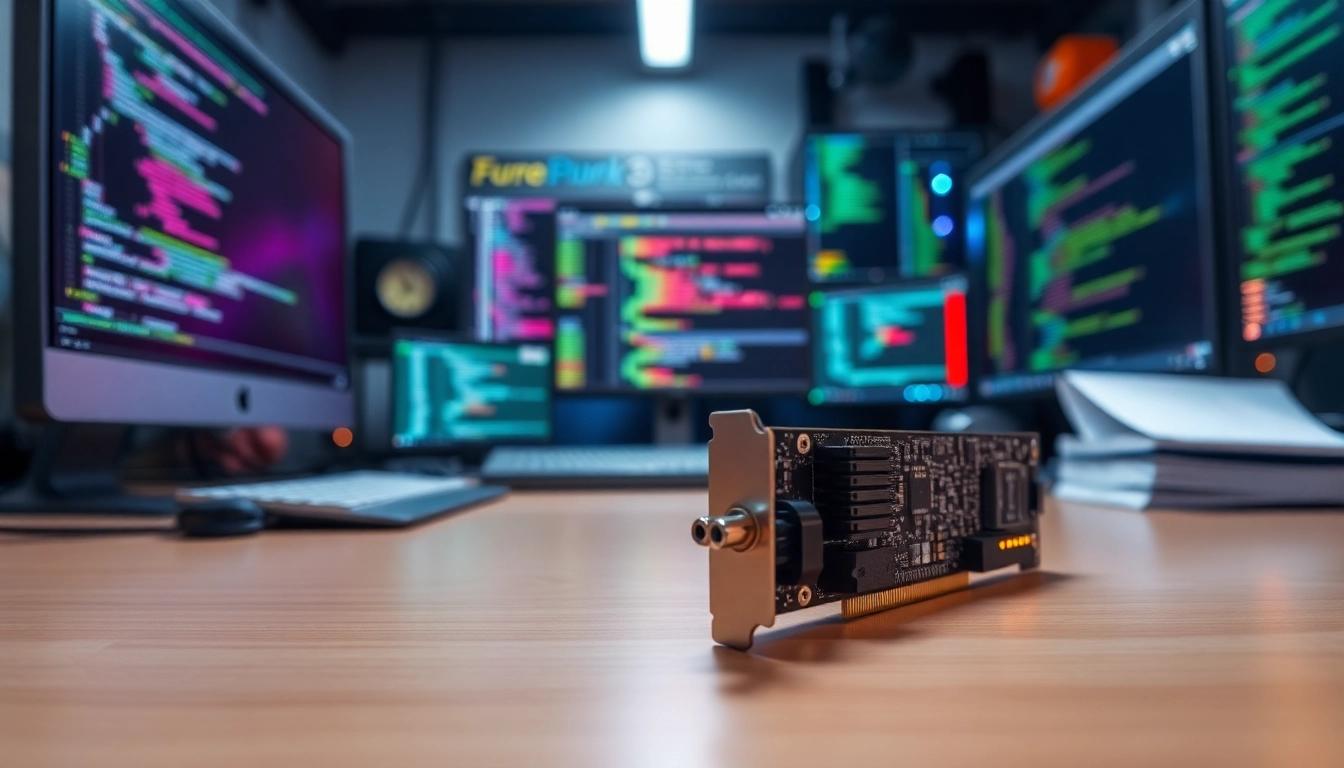Introduction to the api for midjourney
The landscape of artificial intelligence has transformed dramatically, with tools playing a crucial role in how we generate and manipulate images. A significant player in this arena is the api for midjourney. This API allows developers to optimize and automate the image generation process powered by advanced AI algorithms. It stands as a bridge for integrating sophisticated image generation capabilities into various applications, enhancing both creativity and productivity. In this article, we will explore the functionalities, integration techniques, advanced features, best practices, and future trends of the api for midjourney.
What is the api for midjourney?
The api for midjourney provides a programmable interface to interact with a powerful image generation model. It is designed to process textual prompts and transform them into visual representations through complex neural networks. While the official Midjourney API has not been released, the opportunities rendered by the api for midjourney are vast, empowering developers to craft unique applications tailored to specific user needs.
Benefits of using the api for midjourney
- Enhanced Creativity: By leveraging the capabilities of AI, users can innovate new artistic directions and create visually stunning images with minimal effort.
- Automation of Workflows: The API allows for the automation of image generation, significantly speeding up the creative process and reducing the need for manual input.
- Customization Options: Developers can tailor the API’s functionalities to suit specific applications, thus catering to unique user preferences and requirements.
- Cost-Effectiveness: Integrating the api for midjourney can be a cost-effective solution for businesses looking to enhance their visual content without investing heavily in traditional image generation tools.
- Scalability: As demand grows, the API can seamlessly scale operations to handle increased loads, making it ideal for businesses with fluctuating image demands.
Basics of AI image generation
AI image generation relies on algorithms that can learn from large datasets of images and their associated descriptions. These models, often based on deep learning techniques, can understand complex patterns and create new images that reflect the learned data. The process typically involves:
- Data Collection: Curating a dataset that includes images and corresponding textual descriptions to train the model.
- Preprocessing: Normalizing and converting images to the necessary formats compatible with the model.
- Training: Using machine learning techniques to train the model on the dataset, allowing it to learn how to generate new images based on textual inputs.
- Generation: Inputting a text prompt into the model to receive an AI-generated image.
Integration Techniques for the api for midjourney
Setting up your development environment
Before utilizing the api for midjourney, it is essential to prepare a conducive development environment. This involves:
- Choosing a Programming Language: The api for midjourney can be integrated using various programming languages including Python, JavaScript, or any other language that supports RESTful API communication.
- Installing Required Libraries: Depending on the programming language chosen, install necessary libraries such as
requestsfor Python, oraxiosfor JavaScript, facilitating easy API calls. - Setting Up API Keys: Obtain your API key from the [service provider] to authenticate your requests.
Connecting to the api for midjourney
Once the environment is set up, you can proceed to connect to the api for midjourney. This involves making HTTP requests to the API endpoint using your designated method (GET, POST, etc.). Follow these steps:
- Create a Request: Use an HTTP client to construct your request. Set the required headers, including the Authorization header to include your API key.
- Send the Request: Execute the request to the endpoint provided by the api for midjourney. Confirm that the endpoint is active and responsive.
- Handle the Response: Upon receiving the response, implement error handling to manage unsuccessful requests, ensuring a smooth user experience.
Common integration challenges
Integration of APIs can sometimes pose challenges. Here are a few common issues and their solutions:
- Authentication Issues: Ensure that your API key is valid and has not expired. Implement retry mechanisms for common error responses.
- Rate Limiting: Many APIs have usage limits. Monitor your usage and implement strategies such as exponential backoff to prevent hitting these limits.
- Data Formatting Errors: Ensure that the data sent to the API conforms to expected formats. Validate input data before making requests.
- Network Connectivity Problems: Periodically check your network status. Implement error handling for retries on failed network communications.
Advanced Features of the api for midjourney
Customizing image outputs
The api for midjourney allows users to customize image outputs, tailoring AI-generated images to meet specific aesthetic requirements. Customization options may include:
- Style Adjustment: Specify artistic styles or techniques to influence the generated images, ranging from photorealistic to abstract.
- Color Schemes: Suggest color palettes or limits on color diversity to fit branding or thematic needs.
- Aspect Ratios: Define dimensions and aspect ratios for generated images, aligning with the requirements of different platforms (like social media formats).
Utilizing parameters for enhanced results
Developers can utilize various parameters to enhance the quality of generated images. This may include:
- Prompt Engineering: Crafting prompts with specific language to guide the AI more effectively toward desired outcomes.
- Parameter Tuning: Adjust settings such as style strength or complexity level to refine the output quality.
- Batch Processing: Submitting multiple requests in a single batch can yield diverse results from similar prompts, providing richer options.
Examples of successful applications
Numerous applications are leveraging the api for midjourney for distinct use cases, from marketing to content creation:
- Customized Artwork: Businesses are using the API to generate bespoke artworks that enhance their brand identity and visual storytelling.
- Content for Digital Marketing: Marketers utilize the API to create engaging visuals for social media, email campaigns, and blogs without the need for a dedicated design team.
- Prototype Designs: Designers can quickly render concepts and prototypes, facilitating a quicker feedback loop during the design phase.
Best Practices for Using the api for midjourney
Effective API usage strategies
To maximize the potential of the api for midjourney, implement recommended strategies such as:
- Documentation Review: Regularly consult the API documentation to stay abreast of updates, new features, and best practices.
- Testing and Iteration: Conduct thorough testing of your integration and iterate on image prompts to fine-tune results.
- User Feedback Incorporation: Listen to user feedback on generated images to continuously improve and adapt prompt strategies.
Performance optimization tips
To ensure high-performance outputs from the api for midjourney, consider these optimization tips:
- Monitor API Usage: Keep track of API calls to ensure efficient use of resources and prevent unnecessary costs.
- Optimize Prompt Length: Avoid overly long or complex prompts that can lead to increased latency or processing errors. Conciseness can yield better and quicker results.
- Cache Responses: Implement caching mechanisms for frequently requested outputs to reduce retrieval times and API calls.
Compliance and ethical considerations
As AI-generated content becomes more prevalent, it is imperative to approach usage of the api for midjourney with consideration for ethical standards:
- Content Ownership: Clarify ownership rights of generated images to prevent legal challenges or disputes.
- Transparency: Communicate that content is AI-generated where applicable, to promote transparency with end-users.
- Bias Mitigation: Be vigilant about potential biases in AI-generated content. Ensure diverse datasets for training and monitor outputs for inclusivity and representation.
Future of the api for midjourney and AI Image Generation
Emerging trends in AI technology
The future of AI technology, specifically in image generation, is bound to witness remarkable advancements. This includes enhanced learning algorithms, allowing for more nuanced and context-aware image generation. Additionally, developments in generative models like GANs (Generative Adversarial Networks) will likely improve quality and realism in AI-generated images.
The role of the api for midjourney in innovation
The api for midjourney will play a pivotal role in driving innovation across various industries. As accessibility to sophisticated image generation increases, creative professionals can focus on visionary projects, while the API takes care of the heavy lifting in content creation. Furthermore, integrations with other AI functionalities, such as machine learning-based analytics, will provide even deeper insights into user preferences and system performance.
How to stay updated with advancements
Remaining informed about industry trends and advancements in the api for midjourney can be achieved through various avenues:
- Follow Relevant Blogs and Publications: Stay current with technology-focused publications and blogs that cover AI innovations.
- Engage in Community Forums: Participate in forums and groups where developers and AI enthusiasts share insights, challenges, and breakthroughs.
- Attend Conferences and Workshops: Engage with industry leaders and peers at conferences to learn about the latest developments and effectively network.



